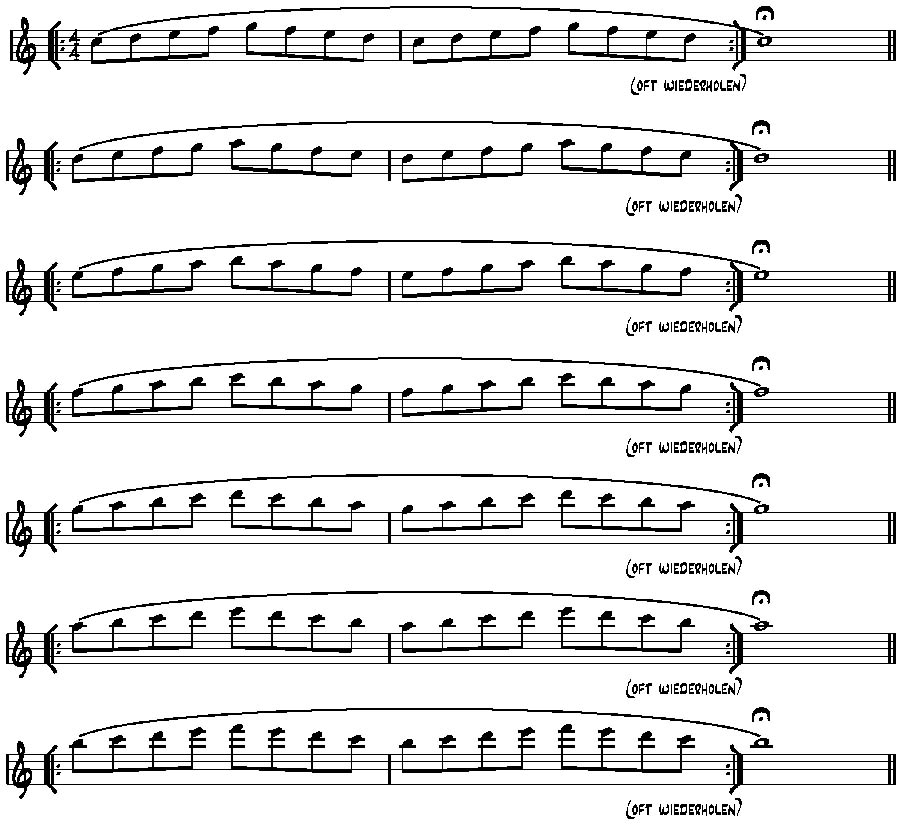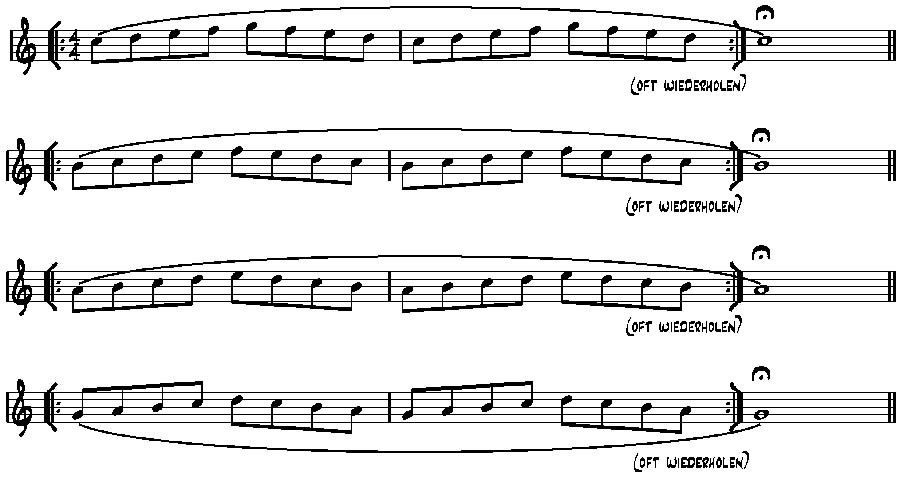Introduction
"There are no difficult keys"”there are only keys you haven’t practiced enough." That is what my teacher, Emil Mangelsdorff, still one of the biggest stars on the German saxophone scene, used to say.Granted, playing a C-major scale where you only need to remove one finger at the time is probably easier than playing an F#-major scale that involves moving at least two fingers for each and every step. As a result, melodies and songs in C major are easier to play than in F#, Ab, Db or B major.Yet, the essence of my teacher’s statement is absolutely correct: we need to practice difficult keys just as thoroughly as easier keys. Most pieces performed by music societies, a saxophone quartet or a big band use keys that are easy on the players’ fingering, yet saxophone players venturing into rock or blues need to be able to play in the typical keys used there. Rock and blues are guitar genres"”and guitarists like to play in E major or A major. Translated into saxophone speak, this means playing in C#, F# or B major.
Wave exercises
Let’s have a look at a fairly simple fingering exercise any saxophone player could use as warm-up for their daily practice sessions. Though I will show the exercise in C major, I encourage you to also play it in other keys. Let’s have a look at the first row. We need to play the first five notes of the C-major scale up and down. By repeating this several times (at least four times, but six or eight would be better still), we create the impression of a wave that keeps moving forward and backward, hence the term "wave exercise." Be sure to play legato, i.e. do not play each note separately, because doing so forces you to focus on the correct fingering. Start out with a tempo that feels comfortable"”what really counts here are the accuracy and precision with which the tone changes occur. This exercise also forces us to pay attention to our embouchure, provided we play it rather softly and with a beautiful sound (our neighbors will be grateful, too!).After completing the first system, we switch to the next note and play the exercise starting at the D. Continue this up to the highest note, F3. Be sure to practice this "warm-up" every day, because doing so automatically forces you to practice the ultra high notes.
Ascending waves
After reaching the top, you can play the exercise starting from middle C downward. I haven’t written down all exercises, because all lines are based on the same principle. It would be a good idea to practice this wave exercise up to the lowest note (B or Bb, depending on the key), because that helps you strengthen the low register:.
Keys
Consider tackling one key a day, i.e. C major on the first day, a different key on the next, and so on. Especially with difficult keys (with lots of sharps and flats), you will notice that even playing at a slow tempo doesn’t necessarily allow you to produce clean notes throughout. But that is precisely what the wave exercise should help you develop!
We could, say, practice in accordance with the circle of fifths:
Day 1: C major/Day 2: G major/Day 3: D major/next: A/E/B/F#/Db/Ab/Eb/Bb/F/C
Or maybe change in fourth steps:
Day 1: C major/Day 2: F major/Day 3: Bb major/next: Eb/Ab/Db (C#)/F#/B/E/A/D/G/C
Chromatic steps are also possible:
Day 1: C major/Day 2: Db major/Day 3: D major/next: Eb/E/F/F#/G/Ab/A/Bb/B/C
There is no right or wrong choice here: pick whichever you like and just stick to it. The important aspect is that you indeed practice all keys.
Tempo
"Speed isn’t a magic trick", is another classic quote. That is why it is always a good idea to start out with a tempo that feels comfortable, i.e. 60~80 beats per minute.
This notion is derived from a metronome, which reminds me that it would be a good idea to practice these warm-ups against a metronome. After a few weeks you may want to gradually increase the tempo"”provided you do so in steps that still allow you to play each and every note with utmost precision (don’t try to cut corners).
Practicing with playbacks
While playing to a metronome is a good thing as such, an accompaniment can be even more effective. One book I would like to recommend in this respect is called "Saxophone Sound" (Schott). It comes with a CD containing 12 songs that use the same tempo (120BPM), while each song is in a different key. Our wave exercises can be played to these accompaniments: start out with quarter notes (rather than eighths), and switch to eighths (or sixteenths) once you believe your fingers are sufficiently trained. Not only are these accompaniments more fun"”they also force you to pay attention to the tuning of your notes. While playing to a CD and listening carefully, you should be able to isolate the notes that sound naturally sharp or flat and to counter that effect by correcting your embouchure.You should devote five to ten minutes a day to these exercises. This is time well spent, because after these warm-ups, you will be up and running for more focused practicing.
That said, have fun,




